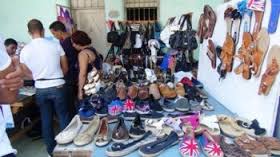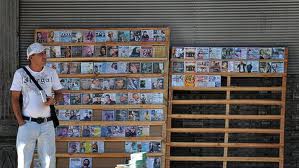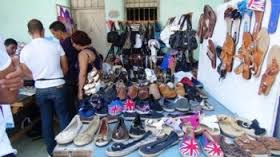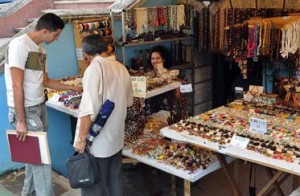CUBA: NEGOCIOS PRIVADOS EMPLEAN YA EL 9% DE LA POBLACIÓN ACTIVA.
Los negocios privados emplean a 450.000 personas ademas de estimular una mentalidad ‘capitalista’ en la isla.
La apertura económica vigente desde hace tres años en la gran isla del Caribe activó la mentalidad capitalista en los nuevos gestores de cafeterías, restaurantes, pizzerías, tiendas de artesanía, peluquerías o gimnasios que han contratado a 450.000 cubanos, en torno al 9% de la población activa, en 200 categorías de gestión privada como agencias inmobiliarias, sastrerías, carpinterías y estudios de fotografía.
De cualquier modo, no todos los nuevos negocios han prosperado y fueron miles los que han tenido que cerrar porque abrieron con más entusiasmo que estudios previos sobre su idoneidad y porque la capacidad adquisitiva de la clientela es muy limitada: el grueso de los 11 millones de cubanos recibe su salario en pesos, un media de 500 mensuales (al cambio unos 25 euros) y los emprendedores orientan casi todos sus negocios hacia el compatriota con divisas. Mientras la dualidad monetaria y la circulación de dos monedas no se solucione la vida de los asalariados en pesos será siendo dura.
El objetivo del Estado es lograr ubicar al medio millón de trabajadores de empresas ruinosas que perdieron su puesto en el pasado reciente ya que el gobierno de Raúl Castro todavía emplea a cuatro de los cinco millones de cubanos laboralmente activos. Una segunda meta es reducir el gasto de las compras en alimentos porque el país importa el 60% de lo que consume: cerca de 1.800 millones de euros anuales. El castrismo permite el moderado enriquecimiento de quienes se aventuran con dinero propio, los menos, o prestado por los dos millones de familiares en Estados Unidos, España y otros países. Sus envíos a la isla suman 2000 millones de euros anuales. Sin subsidios, son 200 las pymes estatales que fueron reconvertidas en cooperativas el pasado año y que consolidaron la recaudación fiscal para aumentar su contribución a los presupuestos generales en un 18%, aunque sólo representan el 2% del total.
Al cierre del 2013, cerca de 2.000 restaurantes funcionaban con pagos en CUC, la moneda fuerte, equivalente al dólar, y se alquilaban 7.250 habitaciones en hoteles. Aunque sólo la diáspora y los nacionales con divisas pueden comprar pisos, automóviles y financiar los emprendimientos que exigen miles de euros de inversión, el resto de los compatriotas puede optar a los créditos ofrecidos por el Banco Central de Cuba. Por ahora, sólo los pidieron 550 emprendedores.
Al haber asumido Cuba los mecanismos de mercado en su embrión capitalista, asumió también los daños colaterales: las emergentes desigualdades sociales, las tercerías mafiosas durante los cambios de titularidad de pisos y vehículos, y los contratos falsos sobre cuantía y concepto de las transacciones para evadir impuestos.
BAENegocios/Agencies/InternetPhotos/www.thecubanhistory.com
CUBA: PRIVATE BUSINESSES employing 9% of the workforce.
The Cuban History, Hollywood.
Arnoldo Varona, Editor
Viejo y todavía hermoso edificio en las Calles Prado y Neptuno, La Habana, Cuba. Cuba en Fotos.
Foto por Roberto Suarez (Master Photographer).
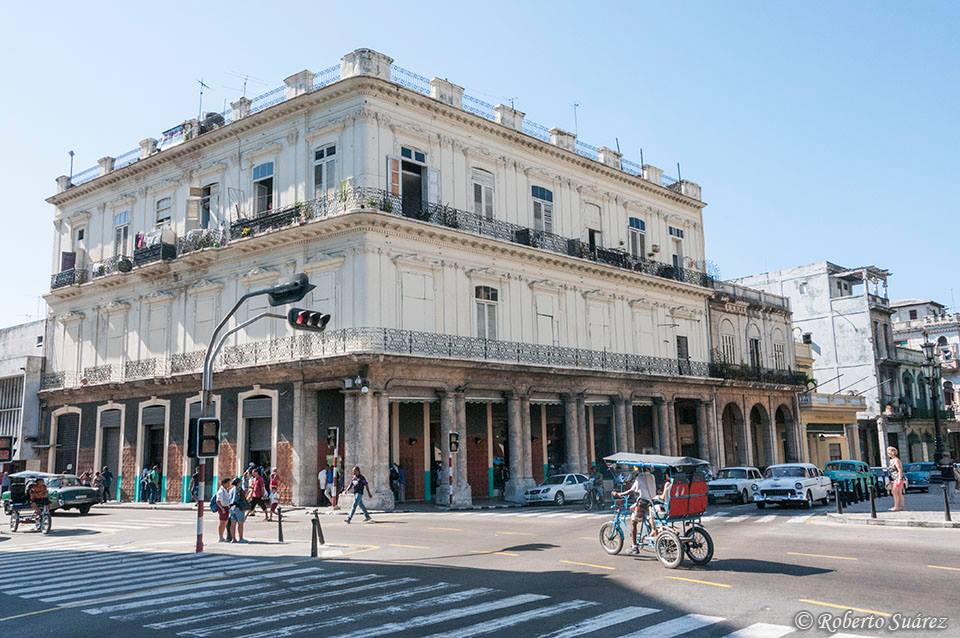
CUBA: PRIVATE BUSINESSES EMPLOYING 9% OF THE WORKFORCE. .
Private businesses employ 450,000 people in addition to stimulating a ‘ capitalist ‘ mentality on the island.
The current economic opening three years ago in the great Caribbean island triggered the capitalist mentality in the new managers of cafes , restaurants , pizzerias , craft shops , hair salons or gyms that have hired 450,000 Cubans, around 9 % of the workforce, in 200 categories privately run as estate agents , tailoring , carpentry and photography studios .
However, not all new businesses have prospered and were thousands who have had to close because it opened with more enthusiasm than previous studies on their suitability and that the purchasing power of the customers is very limited : the bulk of the 11 million Cubans receive their wages in pesos, an average of 500 per month ( about 25 euros to change ) and entrepreneurs almost all business oriented towards compatriot currencies . While the dual currency and dual currency circulation life of employees in pesos will be solved not being tough.
The objective is to locate the state half a million workers who lost their businesses ruined place in the recent past as the government of Raul Castro still employs four of the five million Cubans occupationally active . A second goal is to reduce spending on food shopping because the country imports 60 % of its consumption : about 1,800 million per year . The Castro regime allows moderate enrichment of those who venture with their own money, less, or provided by the two million families in the United States, Spain and other countries. Shipments to the island totaling 2 billion per year . Without subsidies , the state ‘s 200 SMEs that were converted into cooperatives last year and consolidated tax collection to increase its contribution to the general budget by 18% , although they represent only 2% of the total.
At the end of 2013 , nearly 2,000 restaurants operated with CUC payments , strong currency, the dollar equivalent , and 7,250 rooms were rented in hotels. Although only the diaspora and national currencies can buy homes , cars and finance ventures that require thousands of euros of investment, the other countrymen may qualify for credit from the Central Bank of Cuba . For now , only asked 550 entrepreneurs.
Having assumed Cuba market mechanisms in its capitalist embryo, also assumed the collateral damage : emerging social inequalities , mafia third party with during changes in ownership of homes and vehicles, and false contracts amount and concept of transactions to evade taxes.
BAENegocios/ Agencies / InternetPhotos / www.thecubanhistory.com
CUBA : PRIVATE BUSINESSES Employing 9% of the workforce .
The Cuban History , Hollywood.
Arnoldo Varona , Editor



